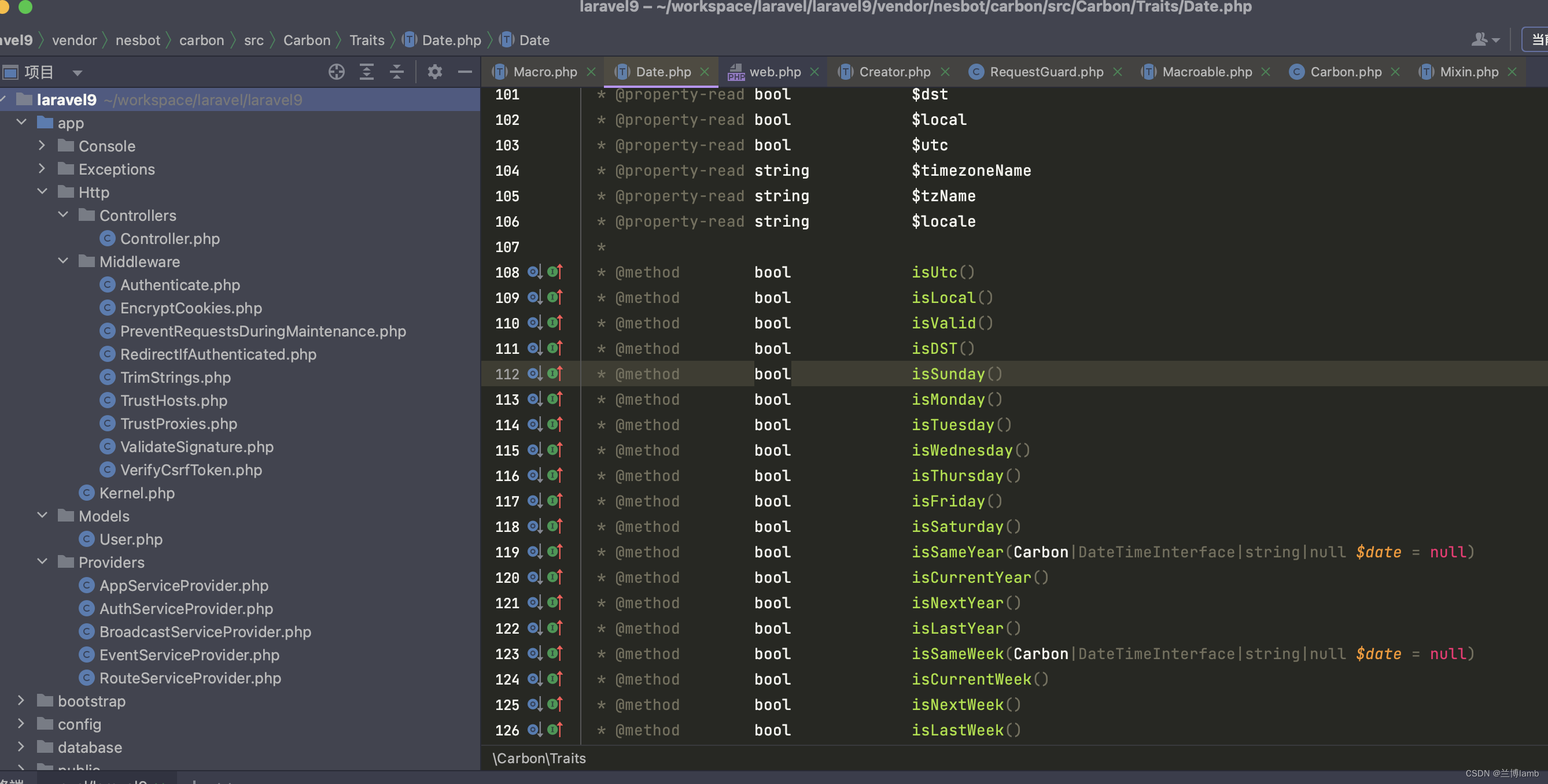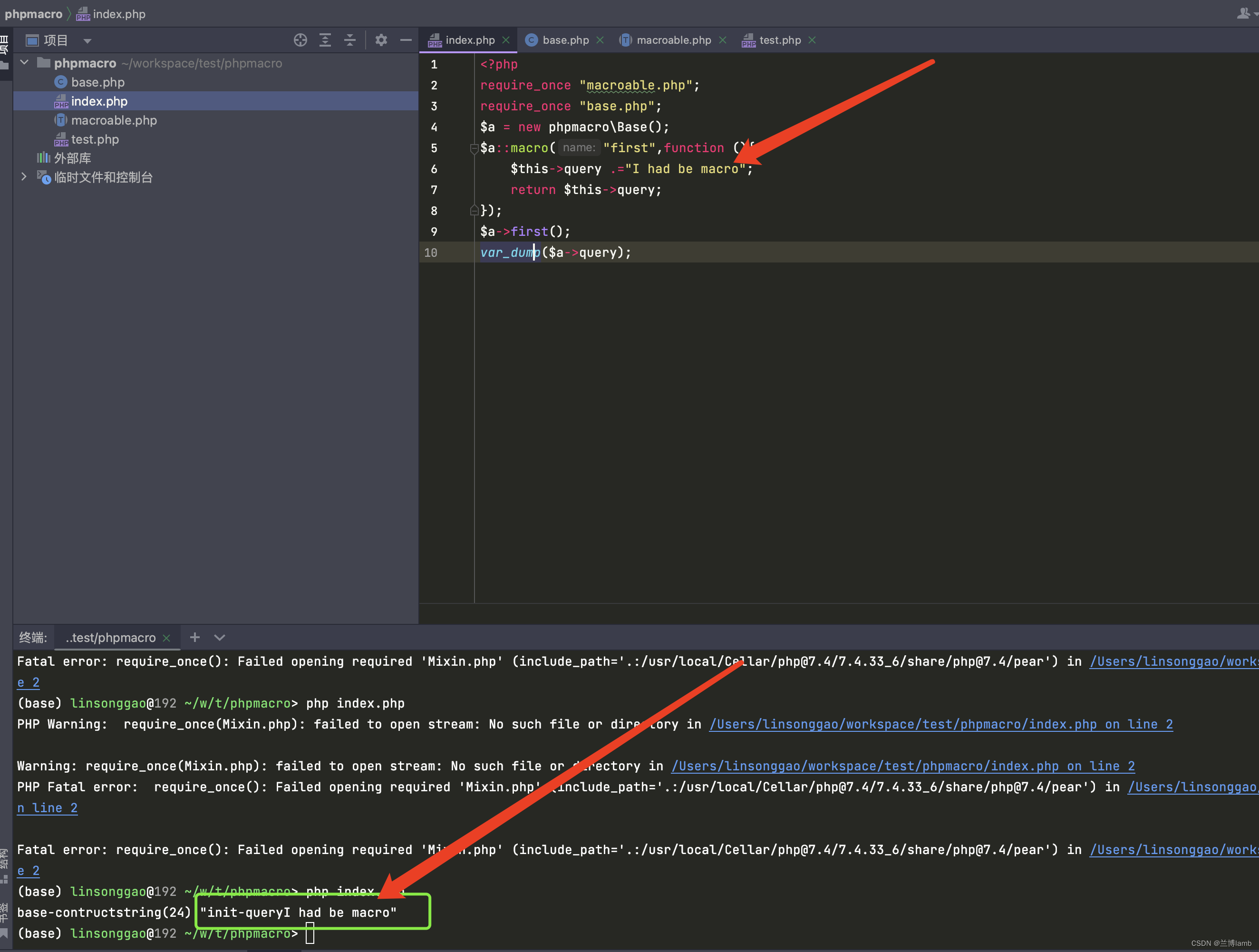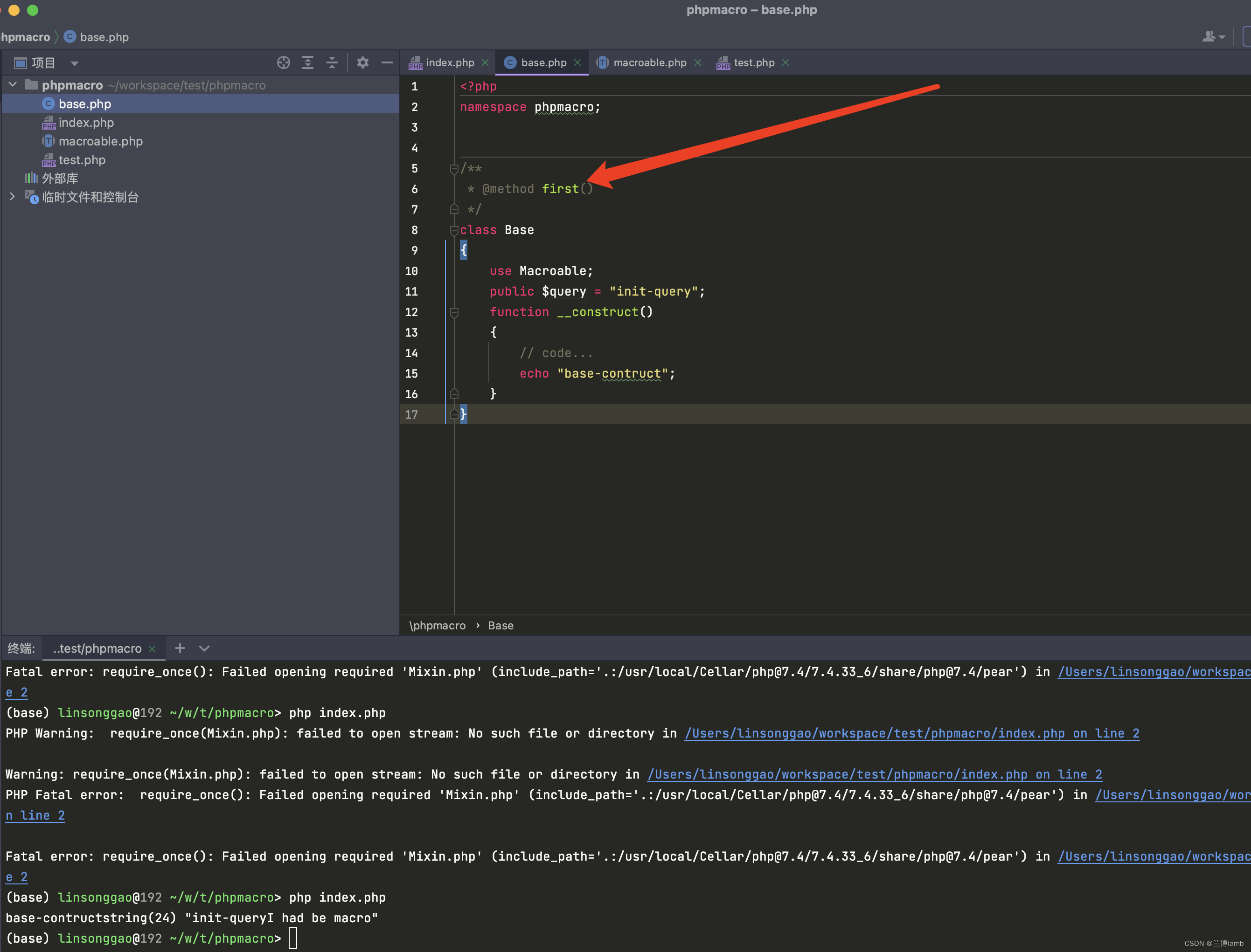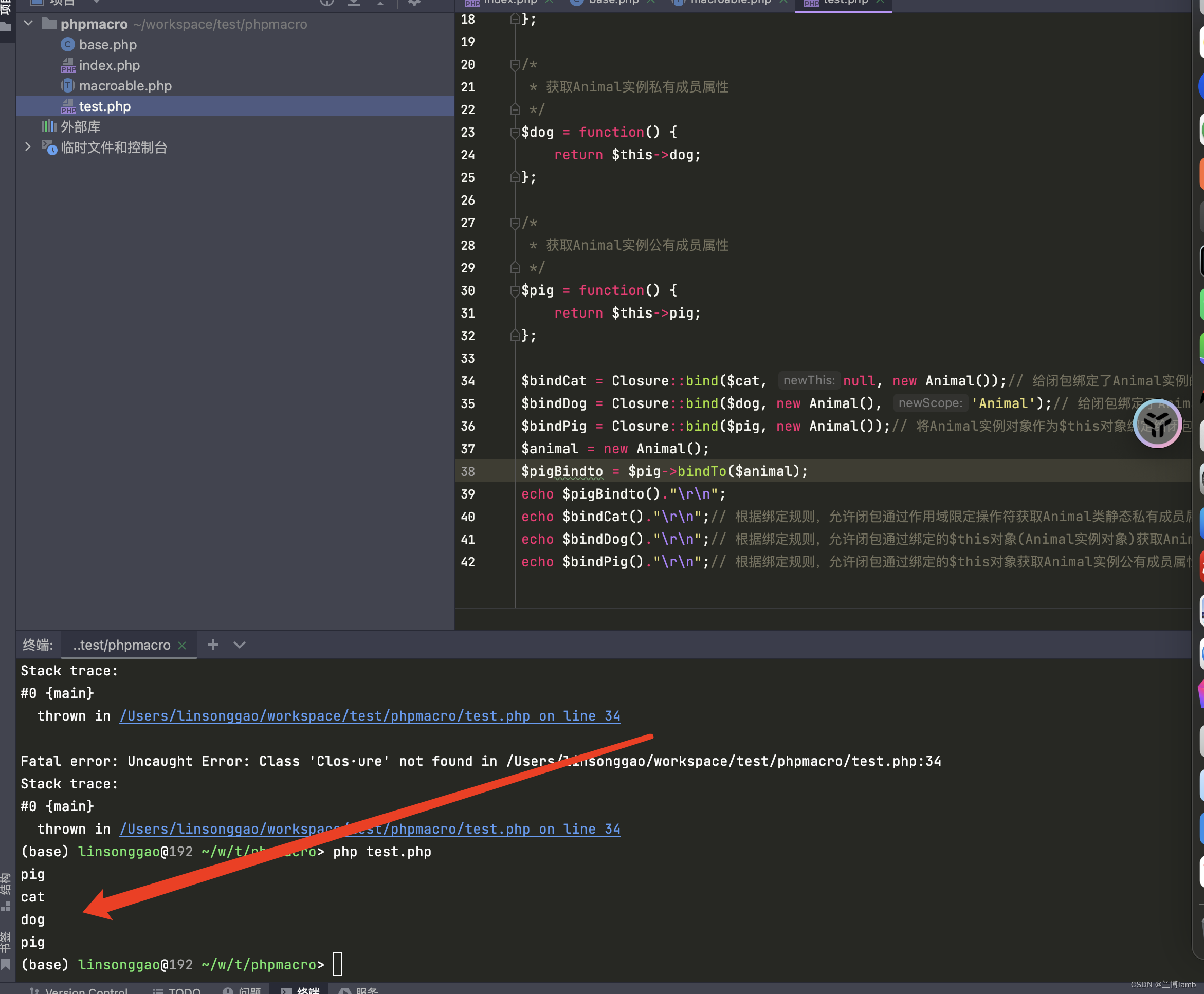在使用框架的时候我们经常会看到如下代码

类的方法不会显示地声明在代码里面,而是通过扩展的形式后续加进去,这么做的好处是可以降低代码的耦合度、保证源码的完整性、团队开发的时候可以分别写自己的服务去扩展类,减少代码冲突等等。我自己看着框架源码实现了这个功能。
以下是结果:

base代码

index.php
<?php
require_once "macroable.php";
require_once "base.php";
$a = new phpmacro\Base();
$a::macro("first",function (){$this->query .="I had be macro";return $this->query;
});
$a->first();
var_dump($a->query);
base.php
<?php
namespace phpmacro;/*** @method first()*/
class Base
{use Macroable;public $query = "init-query";function __construct(){// code...echo "base-contruct";}
}
Macroable.php
<?phpnamespace phpmacro;use BadMethodCallException;
use Closure;
use ReflectionClass;
use ReflectionMethod;trait Macroable
{/*** The registered string macros.** @var array*/protected static $macros = [];/*** Register a custom macro.** @param string $name* @param object|callable $macro* @return void*/public static function macro($name, $macro){static::$macros[$name] = $macro;}/*** Mix another object into the class.** @param object $mixin* @param bool $replace* @return void** @throws \ReflectionException*/public static function mixin($mixin, $replace = true){$methods = (new ReflectionClass($mixin))->getMethods(ReflectionMethod::IS_PUBLIC | ReflectionMethod::IS_PROTECTED);foreach ($methods as $method) {if ($replace || ! static::hasMacro($method->name)) {static::macro($method->name, $method->invoke($mixin));}}}/*** Checks if macro is registered.** @param string $name* @return bool*/public static function hasMacro($name){return isset(static::$macros[$name]);}/*** Flush the existing macros.** @return void*/public static function flushMacros(){static::$macros = [];}/*** Dynamically handle calls to the class.** @param string $method* @param array $parameters* @return mixed** @throws \BadMethodCallException*/public static function __callStatic($method, $parameters){if (! static::hasMacro($method)) {throw new BadMethodCallException(sprintf('Method %s::%s does not exist.', static::class, $method));}$macro = static::$macros[$method];if ($macro instanceof Closure) {$macro = $macro->bindTo(null, static::class);}return $macro(...$parameters);}/*** Dynamically handle calls to the class.** @param string $method* @param array $parameters* @return mixed** @throws \BadMethodCallException*/public function __call($method, $parameters){if (! static::hasMacro($method)) {throw new BadMethodCallException(sprintf('Method %s::%s does not exist.', static::class, $method));}$macro = static::$macros[$method];if ($macro instanceof Closure) {$macro = $macro->bindTo($this, static::class);}return $macro(...$parameters);}
}其实原理就是利用了静态调用的魔术方法与匿名函数的bindTo方法实现了类与方法解藕的效果
以下是test.php,可以清晰的看明白匿名函数bindTo跟bind是怎么用的
<?php
/** * 复制一个闭包,绑定指定的$this对象和类作用域。 * * @author 疯狂老司机 */
class Animal {private static $cat = "cat";private $dog = "dog";public $pig = "pig";
}/* * 获取Animal类静态私有成员属性*/
$cat = static function() {return Animal::$cat;
};/* * 获取Animal实例私有成员属性*/
$dog = function() {return $this->dog;
};/* * 获取Animal实例公有成员属性*/
$pig = function() {return $this->pig;
};$bindCat = Closure::bind($cat, null, new Animal());// 给闭包绑定了Animal实例的作用域,但未给闭包绑定$this对象
$bindDog = Closure::bind($dog, new Animal(), 'Animal');// 给闭包绑定了Animal类的作用域,同时将Animal实例对象作为$this对象绑定给闭包
$bindPig = Closure::bind($pig, new Animal());// 将Animal实例对象作为$this对象绑定给闭包,保留闭包原有作用域
$animal = new Animal();
$pigBindto = $pig->bindTo($animal);
echo $pigBindto()."\r\n";
echo $bindCat()."\r\n";// 根据绑定规则,允许闭包通过作用域限定操作符获取Animal类静态私有成员属性
echo $bindDog()."\r\n";// 根据绑定规则,允许闭包通过绑定的$this对象(Animal实例对象)获取Animal实例私有成员属性
echo $bindPig()."\r\n";// 根据绑定规则,允许闭包通过绑定的$this对象获取Animal实例公有成员属性
输出结果












)
)


)



